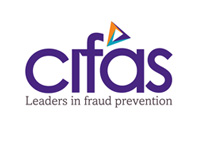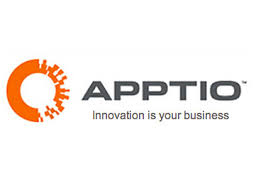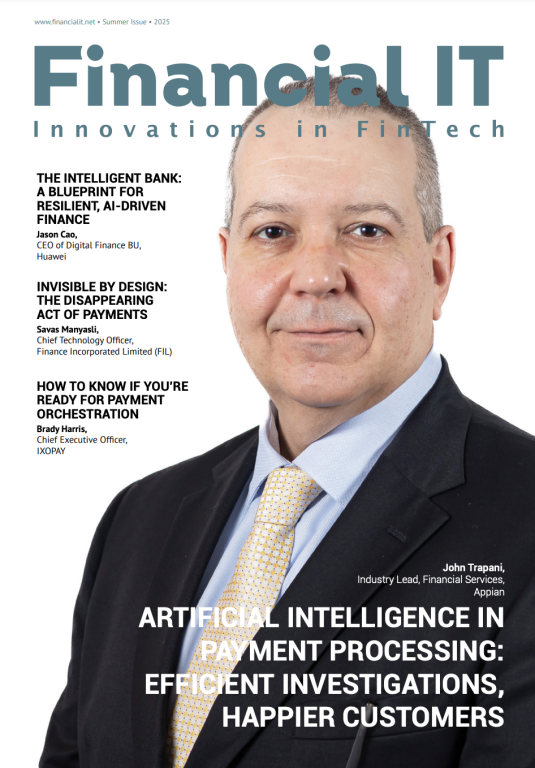Published
- 05:00 am

A new collaborative report, released today by Cifas, the UK’s leading fraud prevention service, and LexisNexis® Risk Solutionsan information solution provider that helps organisations assess, manage and predict risk and part of RELX Group, highlights that company directors are one of the most at-risk groups for identity fraud. Nearly 19% of identity fraud victims are company directors, this is despite company directors comprising less than 9% of the UK’s population.
Furthermore, the report also identifies a trend where identity fraudsters targeting company directors are attempting to obtain credit files as a pre-cursor to committing identity fraud. Nearly half (47%) of recorded identity frauds involving the fraudulent procurement of credit files from company directors took place in London and the South East, with 28% coming from the capital. This contrasts sharply with comparatively safe regions such as Wales and the North East which accounted for just 2% of these fraud cases respectively.
The report utilises research spanning three and a half years of impersonation data extracted from the Cifas National Fraud Database, which contains the details of impersonation recorded by its member organisations, and further qualified with additional data provided by LexisNexis Risk Solutions.
Not only were company directors statistically more likely to be victims of fraud, but as with other victims they were also found to be at risk from multiple impersonations, with 17% of director-level victims suffering impersonation fraud more than once across the three and a half year period. This comes at a time when identity fraud is at an all-time high, having risen by over 68% since 2010 to almost 173,000 individual cases in 2016.
The report also shows that company directors who fell victim to fraud were likely to be younger than other groups who were impersonated. Nearly a third (28%) of director-level fraud victims were in their 30s. This contradicts any notion that identity fraudsters deliberately target older people based on their perceived affluence and status in life and instead find greater success with younger generations who are likely to have a typically larger digital footprint.
Lady Barbara Judge CBE, Chairman of Cifas, commented on the report:
“With almost one in every two crimes a fraud or cybercrime, company directors are increasingly aware of the need to have the right systems and processes in place to protect their staff and customers from this growing threat. This research reveals that they themselves are at increased risk of identity fraud in comparison to the rest of the UK.
“There will always be more publicly available information about you if you run your own business compared to other individuals. I however would encourage company directors to do as much as possible to separate their personal and company personas. Limit the personal information you share on social media and professional networking sites, and proactively check your credit file and your accounts. The quicker you spot that your details have been used fraudulently, the easier it will be to limit the damage caused.”
Related News

Christian Ball
Head of Retail-Atlantic Region at GFT
If oil was thought to be the most valuable commodity at the beginning of the 20th Century, then data has now assumed a similar role in the post industrial age that is the 21st see more
- 01:00 am

Research into consumer adoption of digital services in the UK has revealed that the banking sector is perceived to be leading the way.
Against a backdrop of increased regulatory pressures and competition between traditional and online-only banks, the industry is having to move rapidly and consumers are responding favourably to this change. Young people (18-24 year olds) in particular are more likely to bank on their smartphone (70%), compared to 37% of over 55s. Today, 28% of all respondents said they visit a bank / building society in-branch just once a year or less often, and 59% of people say the main reason for such a visit is usually to pay in cash or a cheque.
These findings are supported by the latest UK Customer Satisfaction Index, which shows that customer satisfaction for the Banks & Building societies sector is at its highest point in nine years; making it the second most improved sector compared to a year ago.
“The last five years has seen banks working hard behind the scenes on making savings to support innovation of new customer services and experiences. The infrastructure that is required to keep a bank running is among the most complex of any industry in the world. Getting visibility over where efficiencies can be achieved, benchmarking the options and realising these savings is a critical but often overlooked step in the process,” said Sunny Gupta, Apptio CEO.
“Recently banks have been able to unlock spend in this way and fuel the fantastic uplift in customer satisfaction generated by the availability of new digital services and customer experiences.”
Switching banks
However, while customers applaud progress in the banking sector, when it comes to enticing consumers to take action, there is still work to be done. In fact, according to the research, people are almost twice as likely to have switched their main supermarket within the last two years (18%) than to have switched their current account provider (10%). Consumers of insurance products appear to be the most transient group, with 34% having switched within the last year.
The most common reason cited by banking customers to switch current account was an incentive, such as a one-off promotion (58%), followed by the pursuit of better customer service. However, better digital presence is the reason given by one third of young people (33%) for making the change; while on average this was a consideration for just 10% of people aged 25 and older.
Faces behind the innovation
In spite of their pivotal role in bringing new products and services to market, 78% of people in the UK admit that they don’t know what the acronym “CIO” stands for. In fact, 16% of those who claimed to know what CIO stands for believe it stands for Chief Investment Officer rather than Chief Information Officer.
Related News
- 02:00 am

Today, IBM launched the first suite of cognitive solutions to help financial institution professionals manage their regulatory and fiduciary responsibilities.
Managing risk and compliance currently consumes 10 to 15 percent of operational spending budgets among major banks, with annual spending estimated at $270 billion per year for financial services organizations1. This burden is expected to only grow in the coming years. By 2020, the global financial services industry will contend with an estimated 300 million pages of regulations, with thousands of new pages added each year after that 2.
Watson - IBM’s artificial intelligence and cognitive computing platform - has assisted a wide variety of professionals in managing massive and complex bodies of data. The company has trained Watson in the nuances of specific industries, including healthcare and cybersecurity.
Now, IBM is doing the same for financial regulations.
Promontory Financial Group, an IBM subsidiary that specializes in risk management and regulatory compliance, has trained Watson initially on 60,000 regulatory citations. Watson has also started to review transactions and cases related to potential financial crimes. The result is a suite of cognitive solutions that are designed to offer professionals assistance in making better-informed risk and compliance decisions with greater speed. Over time, additional data sets will be added, which will allow the machine learning and analytics embedded in Watson Financial Services to further expand and help improve the insights provided to professionals.
“Two generations ago, IBM brought the first computers to the financial services sector, allowing banks and other institutions to foster greater trust in the market by operating more efficiently and accurately,” said Bridget van Kralingen, senior vice president, IBM Industry Platforms. “To strengthen trust today, financial institutions must analyze an industry’s worth of information to help monitor risk and compliance. No individual, or team of individuals, can adequately do this alone, and so once again, IBM is bringing a new type of computing - cognitive computing - to help these professionals operate more effectively.”
Gene Ludwig, founder and chief executive officer at Promontory Financial Group, added, “The speed and volume of information that financial institutions must manage is already daunting and yet still growing rapidly. The answer to this problem is cognitive technology taught by industry experts, like those at Promontory. Essentially, we’re embedding our deep regulatory experience into Watson so that a broader group of professionals can benefit from this knowledge and help their organizations operate more effectively and efficiently.”
The solutions are available to financial services industry clients, many of whom have worked with IBM and Promontory to address their risk and compliance needs.
“The growing demands of regulators for more complex reporting has presented the banking industry with an enormous technical challenge,” said Rita Gnutti, head of market and counterparty risk internal models at Intesa Sanpaolo. “Working with partners like IBM, we can be more confident that our rigorous and consistent approach to risk modelling and reporting will satisfy the latest FRTB regulatory requirements."
Related News
- 07:00 am

Visa, the Official Payment Service Partner of FIFA, today announced that football fans attending the FIFA Confederations Cup 2017 will have a front row seat to enhanced payment experiences at official FIFA stadiums.
Understanding football fans want to focus on the quality of play on the pitch, Visa is offering multiple ways to pay that will save fans even more time and give them the opportunity to get back to their seats to catch that dreaded missed goal, corner kick or red card:
Visa commemorative prepaid cards, which can be reloaded at contactless Alfa-Bank ATMs throughout the stadiums
Visa contactless credit or debit cards
Mobile payments with Visa at NFC-enabled terminals
As a global leader in payment innovation, Visa is also collaborating with Russia-based Alfa-Bank, the Official European Bank of the FIFA Confederations Cup 2017, to introduce a Visa NFC-enabled Alfa-Bank payment band, which is available for 1,000 Russian Ruble (approximately $18 USD) at Visa customer service booths throughout stadiums and reloadable using fan’s personal credit or debit cards. Select Visa and Alfa-Bank guests will also be able to use a payment ring for the first time at a FIFA event. The payment ring, attached to a prepaid card, features an embedded NFC-enabled antenna, enabling fans to tap to pay throughout Russia, anywhere contactless payments are accepted.
“As the Official Payment Service Partner of the FIFA Confederations Cup 2017, we are thrilled to bring fans some of the most innovative payment experiences from around the world, enabling them to go cashless at the tournament,” said Ekaterina Petelina, country manager, Visa Russia. “We understand that fans are there for the action on the field and that they value a simple payment experience that gets them back to their seats quickly so they can focus on the match.”
Related News
- 05:00 am

Q2 Holdings, Inc., a leading provider of secure, cloud-based digital banking solutions for community-focused financial institutions (FIs), announced today the launch of Q2 Open, a new portfolio of open API financial services.
“Our mission is to strengthen financial institutions, and as our industry evolves, our clients need new ways to deliver innovative financial services,” said Matt Flake, CEO of Q2. “Q2 Open is designed to make it easier, faster and more cost-effective to develop digital financial tools and represents meaningful opportunities for financial institutions and fintechs to partner and drive new growth.”
Q2 Open is comprised of four services consumed through open APIs, which allow development-capable organizations to build front-end interfaces and experiences on top of Q2 Open’s existing technology infrastructure.
Services include:
• Q2 Debit, which enables federally insured checking account creation into applications and offers branded debit cards integrated into Visa or MasterCard rails.
• Q2 Save, which offers fully functional, compliant and cost-effective savings accounts with account and routing numbers inside an application.
• Q2 Ledger, which provides ledgering functionality for “For the Benefit Of” (FBO) accounts—an alternative to traditional checking and savings accounts.
• Q2 Biller Direct, which aggregates users’ bills and payments into a single view, enabling bill presentment, aggregation and bill pay functionality into their applications.
Q2 Open is already powering several fintech brands and apps, including Qapital—a leading savings app featured in The New York Times, Fast Company, Wired, Forbes and more. Today, Qapital uses Q2’s APIs for its goal-based savings app, which serves more than 300,000 users.
"We've been impressed by Q2 and the Open portfolio," said George Friedman, CEO of Qapital. “Our young audience expects us to be on the cutting edge of digital banking innovation. The Q2 Open APIs enable our team of creators, designers and developers to rapidly deliver new features in our app—allowing us to build a product that our customers really love."
Qapital recently expanded and extended its relationship to further leverage the Q2 Open portfolio, and will use Q2’s open APIs to deploy new cornerstone features—including a Qapital debit card—in the coming months.
The Q2 Open portfolio has been developed and released by Q2 Labs, an innovation-focused team within Q2.
Related News
- 01:00 am

Fiserv, Inc., a leading global provider of financial services technology solutions, today announced that Affinity Plus Federal Credit Union has selected Fiserv to help meet the demand among its members for intuitive and reliable digital self-service banking capabilities.
Affinity Plus selected Architect as the right platform to help meet members’ requests for a robust digital banking experience. The credit union valued the fact that Fiserv has worked with a landscape of credit unions in similar situations.
“Our members let us know they want a simple, intuitive, reliable and improved way to bank with us digitally,” said Dave Larson, president and CEO, Affinity Plus Federal Credit Union. “Fiserv shares our vision for the experience we want to provide for our members, and they have the size and expertise to provide the selection of capabilities we need to deliver.”
The Architect platform chosen by Affinity Plus supports the member-experience principles that drive the credit union’s mobile-first strategy. Architect enables online, mobile, and tablet banking, facilitating a seamless user experience across channels. The platform can also be customized by the credit union, giving Affinity Plus the opportunity to put the precise needs of its members first.
Architect will allow Affinity Plus to deliver digital self-service banking to more than 130,000 online and mobile members.
“For many members, their primary way of engaging with the credit union is through digital channels,” said Kevin Schultz, group president, Digital Banking, Fiserv. “Because of this, people place high value on the digital banking experience. That experience can be a differentiator for credit unions like Affinity Plus that deliver capabilities that are in step with the way people live their lives.”
Architect is part of the Fiserv portfolio of digital solutions that delivers robust digital banking and electronic payments functionality. The solution features a software development kit (SDK) that gives financial institutions the control to customize and expand the solution when and how they want.
Related News
- 05:00 am

SixThirty CYBER, a St. Louis-based business development program that invests in cybersecurity companies, has announced the six companies that will be a part of the SixThirty CYBER 2017 Portfolio & Business Development Program.
AppsCo, Oslo, Norway
Founders - Geir Christian Karlsen
AppsCo provides single identity and access portal where you can simply and affordably provide the right access to the right information to the right people at the right time.
BotDoc, Monument, CO
Founder -Karl Falk
BotDoc is a simple frictionless and secure experience to send and receive sensitive documents and data via a computer or mobile device without introducing anything new or foreign on the consumer.
Reblaze Technologies, Herzliyya, Israel
Founders - Tzury Bar Yochay
Reblaze provides comprehensive, cloud-based, intelligent web security (for sites, apps, and services). It's a complete solution, defending against DoS/DDoS, hacking and breaches, bots, scraping, and other web threats.
Silverfort, Tel Aviv, Israel
Founder - Hed Kovetz, Matan Fattal, Yaron Kassner
Silverfort protects corporate identities, critical assets and business data, by seamlessly discovering and securing every authentication and access activity throughout the entire corporate network and cloud infrastructure.
SourceDefense, Beersheba, Israel
Founder - Hadar Blutrich, Avital Grushcovski
Source Defense is a real time SAAS solution that protects online websites from attacks originating from 3rd party scripts.
Zighra, Ottawa, Canada
Founder - Deepak Dutt
Zighra continuously protects mobile user accounts and data against remote and automated attacks with patented AI powered behavioral intelligence.
Related News
- 05:00 am

Prysm, Inc., a leading digital workplace platform provider, today announced significant traction with the Prysm Engage Partner Program. Through the new program, Prysm is providing its partners with the technology and educational tools to deliver an exemplary collaboration experience for customers, capitalising on the full range of the Prysm portfolio. Prysm partners enjoy higher revenue margins than competing products and are able to architect the ideal digital workplace solution for end customers through a combination of software and hardware.
Recent additions to Prysm’s solutions suite have generated increasing partner commitment, most notably Prysm Go, the company’s new product offering that turns any meeting room into a multi-purpose collaboration room, from simple huddles to advanced collaboration spaces. In less than a month since the solution was released, many partners, including Advanced, AVI-SPL, CCOMM, Diversified, SKC Communications, and Yorktel, have expanded their practices to include Prysm Go. These partners are marketing, selling and providing end-to-end implementation and support services for Prysm Go worldwide.
Currently Prysm has more than 25 authorised reseller partners and numerous solution partners. By the end of 2017, Prysm expects to double the number of partners in its Engage partner ecosystem and further expand into international regions including Europe and Asia.
The Prysm Engage Partner Program encompasses Prysm’s digital workplace platform and proprietary Laser Phosphor Displays (LPD). Open to reseller, solution and consulting partners, the program is energising channel participants by:
· Establishing co-marketing opportunities with partners to promote the success of deployments and drive ongoing business momentum and growth
· Connecting potential customers and prospects with the expertise of authorised Prysm partners
· Delivering successful deployments to customers that promote efficient enterprise collaboration
· Ensuring achievement of partner revenue targets through new and existing customer deployments
In addition, the Prysm Engage Partner Program includes a robust training and certification program as well as access to an extensive set of partner resources to drive customer success.
“Through our new Engage Partner Program, we will continue to provide the agnostic technology that enables our partners to deliver agile and versatile solutions that increase their revenues and push the collaboration industry forward,” said Patrick Finn, vice president of global channel and alliances, Prysm. “A prime example of this is Prysm Go, which is a very compelling addition to our product line because of its simple and integrative design, which enables our partners to transform the meeting room experience for their clients.”
Related News
- 02:00 am

A global leader in online multi-asset trading services, OANDA has further strengthened their relationship with one of the world’s largest and fastest-growing social networks for traders, TradingView, enabling mutual clients to trade directly from tradingview.com charts using their OANDA account.
Under the agreement, clients will benefit from TradingView’s customisable charts and community-powered technical analysis, while continuing to enjoy access to OANDA’s institutional-grade execution engine, fully-automated risk management systems and transparent pricing model, which features no requotes and no rejections. The partnership builds on the integration of TradingView’s world-class advanced charting solution into OANDA’s fxTrade web and desktop platforms, which was implemented last year.
“At OANDA, we constantly strive to empower our clients to become successful self-directed traders, whether it’s through our award-winning education resources, up-to-the-minute market commentary or cutting-edge technology. In addition, we’re equally committed to providing access to state-of-the-art trading tools and platforms such as TradingView, which offers one of the most impressive web-based charting packages available today,” said Vatsa Narasimha, President and Chief Executive Officer, OANDA Global Corporation.
“Thanks to our ongoing partnership with TradingView, our clients can now trade global market indices, commodities, treasuries, precious metals and currencies directly from tradingview.com charts, enabling them to capture opportunities in the markets quickly and easily available on one of the world’s fastest platforms,” Narasimha continued.
“At TradingView we strive to give our global community of traders what they need – build the best and complete tools, encourage sharing of trading ideas, connect data from around the world, and let them trade through brokers they want. We are glad to partner with OANDA, one of the largest and most respected brands in the industry,” said Stan Bokov, co-founder and COO, TradingView.
“Now OANDA customers can use our charts inside the fxTrade platform, as well as log into their OANDA account on TradingView and trade without leaving TradingView, providing a seamless and smooth experience regardless of which platform they prefer,” Bokov added.









